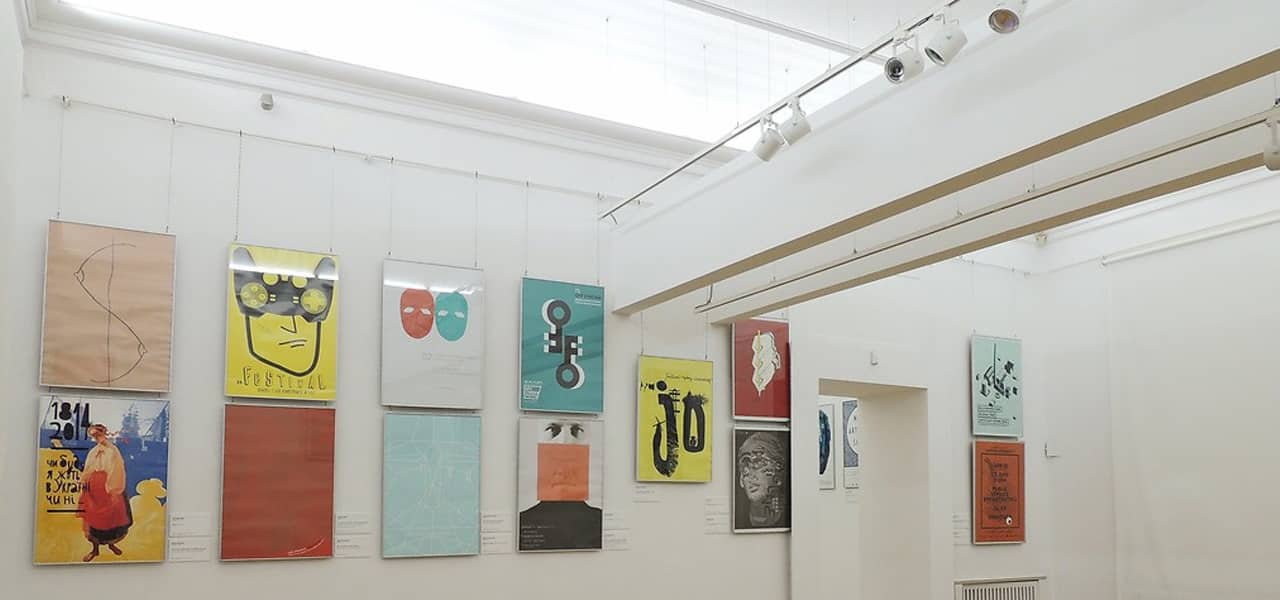
Warsaw Poster Biennale 2014
How would you describe your attitude toward posters, images printed on paper, pasted up on walls? It could seem that the medium, to call it so, is dead, but the organizers of this year’s Warsaw Poster Biennale, led by Mr. David Crowley, don’t really agree. It is perhaps better to give this “death” of a poster a more adequate name, something like remediation, for example. And that is exactly what the people from Warsaw Poster Biennale did. This year, the Biennale will celebrate its fiftieth birthday, but it will also champion the future of the poster. Because of this, they have decided to give this year’s edition an appropriate title: The Poster Remediated. Instead of being frightened of the rise of the digital screen, all the people who admire and understand the power of graphic design should embrace the digital era, as an age of prosperity for the remediated poster.
It is with this sentiment that we approach professor David Crowley, a renowned expert in the field of art, culture and design of Eastern Europe, and the curator of the aforementioned Biennale in Warsaw. In this interview, led by Ana Bambic Kostov, Crowley talks about his experience with the Biennale, the zone of activism, the myths and truths behind posters, the significance of a poster for Polish people, the ways that posters have changed. Some questions arise as well, like, how will the poster change? This is the question that he asks verbally in this interview, but it is also the question that he asks through the outline of this year’s competition for the Poster Biennale. As for the Biennale itself, there are many reasons to look forward to it; among them, the fact that it will give us an opportunity to see some genuine works by Jordan Seiler and Vermibus, both of whom are frequent guests in our articles.
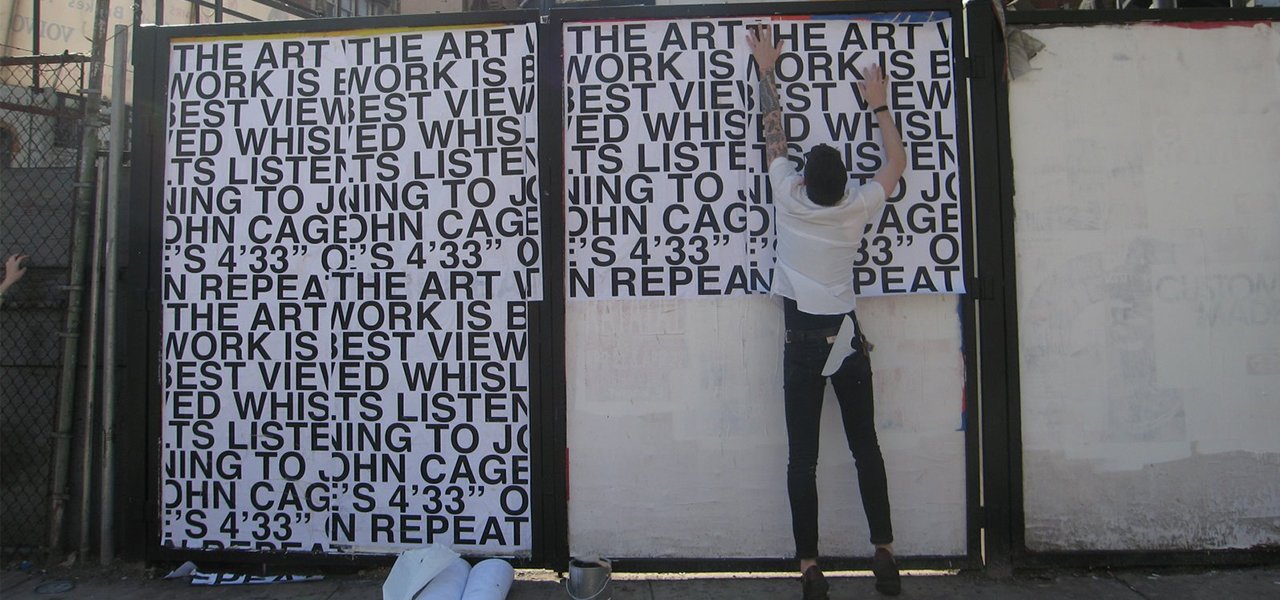
Jordan Seiler – New York Street Advertising Takeover
About the Poster Biennale
A: Warsaw Poster Biennale is an institution in itself, it has been around for 50 years, if I’m correct. So I would like to hear your opinion on how do you think the Biennale has changed since the communist era, I mean Poland has changed a great deal. Has the biennale changed?
DC: Yes, the fact that the Biennale is 50 years old presents an interesting opportunity to pause and reflect on the state of the poster. The Biennale was founded in the middle of Cold War, and, despite this, it was one of those rare points of connection between East and West. It was an island of the liberal, creative imagination in the ‘60s. And, strangely, posters—which we often think about as a form of propaganda— became something like a relatively independent, creative form of expression in communist Poland, largely because of a group of very active artists and intellectuals, some of whom founded the Poster Biennale.
And perhaps for this reason, posters in Poland have been rather fixed on the idea of individual creativity and individual free expression. They seem to accord with the modernist ideal of art. But the country has changed since the end of communist rule in 1989, and the function of posters has changed considerably too. There have been technological changes: we have digital posters in our cities, for instance. And, of course, advertising is a major industry in Eastern Europe, one which are tries to shape consciousness.
So the exhibition that I’m curating this year, on the fifteenth anniversary of the founding of the Biennale, is an attempt to reflect on how the poster has changed, and what it might become in the future. What is a poster when it is delivered on our smart phones, when it appears as an animation on digital screens in the city?
A: Have you ever worked with the Warsaw Poster Biennale before?
DC: Yes, two years ago, I was a juror. This was probably the last version of the classical form of the Biennale —an open competition in which the best designs receive prizes. Many thousands of designs were entered, from China, from Russia, from Latin America. It was an interesting experience to see so much creativity from around the world. But many entries had not been commissioned, and had not, in fact, been printed. Self-initiated, they were designed on screen and then only printed when selected for the Biennale show. In terms of the public function of the poster, this is a problem. Many posters had been designed solely for the purpose of being entered into poster competitions. This is a kind of closed cycle. And what could be further from life?
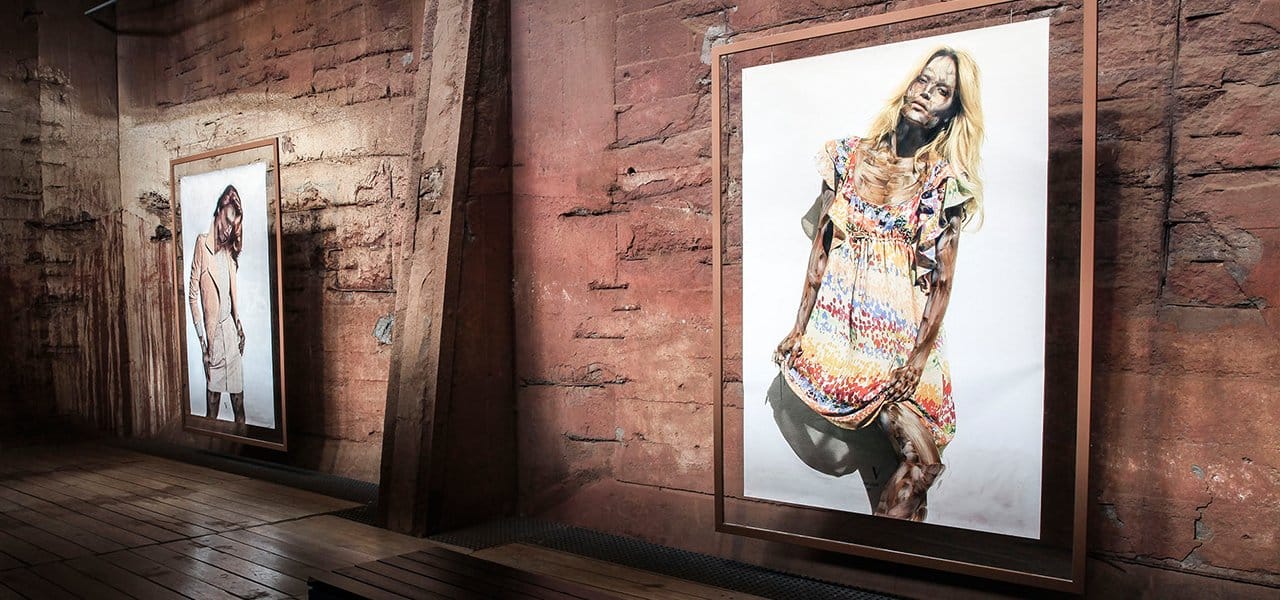
Vermibus, from Urban Art Biennale 2015, Germany via his website
Is the (Paper) Poster Dead?
A: In one interview, I read that you state that the Internet has become the posters nemesis, in a way. I was wondering – does that make the classical paper posters more political or, maybe, more important, or not necessarily? Or is it the other way around?
DC: Yes, let me explain a little more. The uncertain future of the poster is specifically to do with the classical idea of the format – a print on paper which is pasted up on the walls or billboards of our towns and cities. This format may be familiar but it is not the most interesting or even the most important form of the poster today. Look at the many forms of the activism that have taken hold in the world in the last few years – in the Arab Spring, in the Euromaidan protests in Kiev, in the Occupy movement and so on. Handmade, individual posters produced for demonstrations and rallies were photographed by photojournalists or circulated through social media. Distribution and publication of such posters is a form of remediation on the Internet. So, in this example, we can see the digital and the analog combining.
A: So, do you think that poster is dead or not, the paper one?
DC: The paper poster is not dead: we see it on every city street. But the spectrum of what the poster might be has expanded in the last ten or fifteen years of so. I think that one can make a convincing argument to say that we encounter posters on our phones and on computers. And that is what this exhibition is partly about.
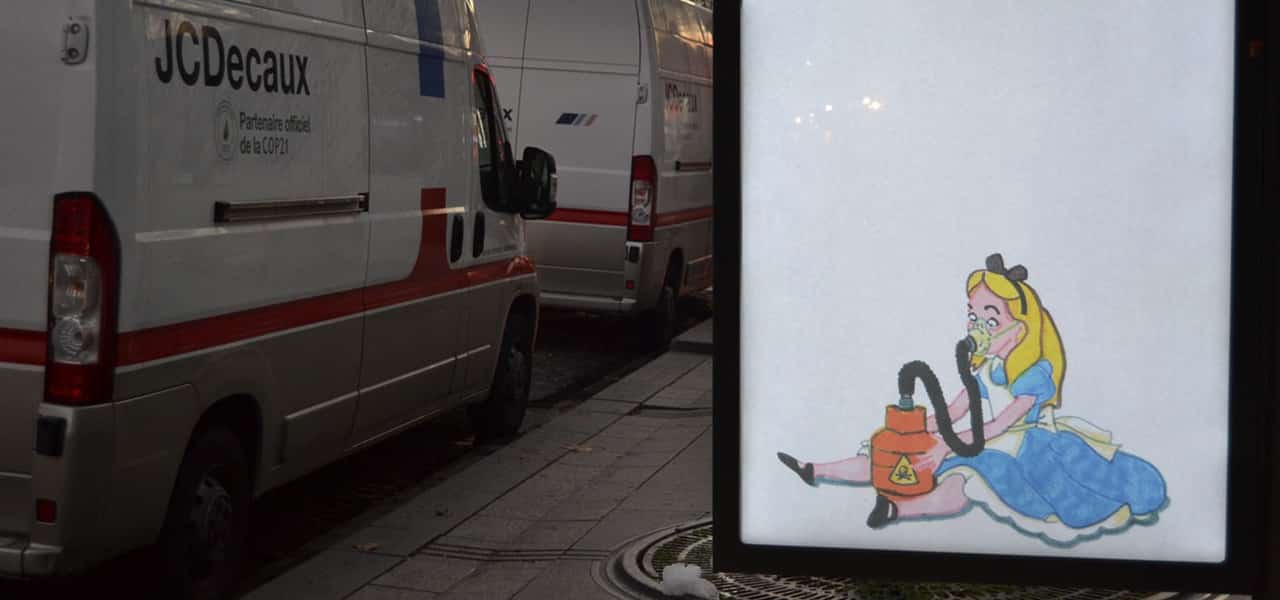
Listen04 via BRANDALISM
On the Participating Artists
A: I wanted to guess the work of two artists you have selected for this show. Jordan Seiler and Vermibus. How can they fit into the remediation of the poster idea? Because their work is quite related to the actual paper posters in the streets and they are called also “culture jammers” in the way. How do you explain their work in this context?
DC: So far, in our conversation, I have emphasized the screen in digital culture, but remediation has taken many forms. We can find the posters being mediated through novels – George Orwell’s Big Brother is Watching You, for instance, is a poster which starts as a series of words in a novel and then appears on screen, in print and on stage. In fact, there are many examples where the posters became a kind of active presence in the movies, playing a role in narrative of the film. Jean-Luc Godard’s films in the 1960s – an age of commercialization and at the end of the decade, political radicalisation – explore the role of adverts and posters in shaping modern attitudes and actions. This is a form of a remediation – in this case through cinema.
One the reason I’ve picked these two artists is of course they are artists. In my view, they remediate posters as art, producing a kind of critical commentary on the state of our media culture. Vermibus has very powerful things to tell us about the dominance of a very narrow conception of beauty in the world. By removing large format advertisements and quite literally working into their surfaces before returning them to their advertising frames, he helps us think about why we demand perfection. This is a form of alienation, particularly when that beauty is the product of Photoshop.
Jordan Seiler is somebody whose very lyrical and beautiful posters ask us to reimagine what our environment might be if it were not in the hands of private businesses. He also works digitally, to offering a critique of contemporary advertising, not least through his NO AD app. Critical commentators on the public space that we inhabit, Seiler and Vermibus offer brilliant glimpses into an alternative vision of our environments might be.
A: Are there any more artists like them in the world that we should know about?
DC: Yes, in the exhibition we also focus on a remarkable project organized by Brandalism. Brandalism is an anonymous adbusting organizations and during the Paris climate change summit last year, they took over a number of poster frames in the city of Paris. More than seventy artists occupied the commercial infrastructure of advertising to focus our attention on the problems of climate change. Some works were deeply ironic, satirizing our addiction to consumption in the very picture frames which conventionally deliver consumer messages. The Brandalism campaign was a considerable achievement, one which found its way into all the major newspapers around the world. This is another example of remediation.
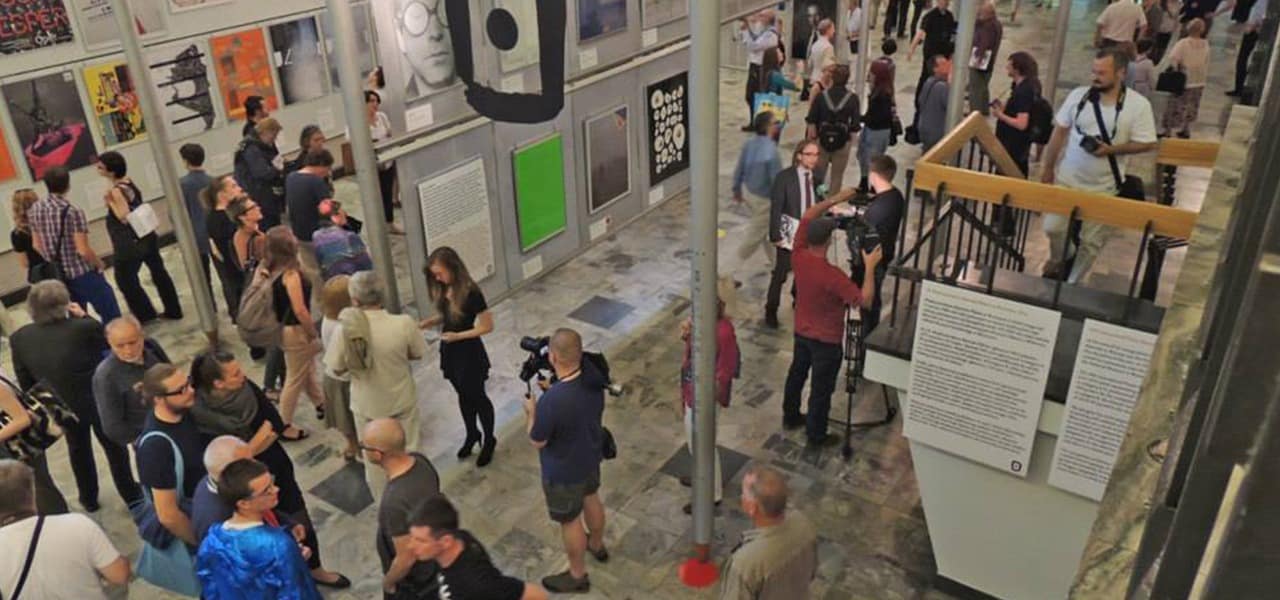
24th Poster Biennale in Warsaw (2014), opening ceremony, via paperposter
The Biennale and the City of Warsaw, as recommended by David Crowley
A: So, the Warsaw Poster Biennale is opening in June and it is going to last until September. Why is it important for everyone to go and see it?
DC: Well, my hope for the exhibition is that it stimulates more public discussion about the sort of visual environment in which we would like to live. This means the outdoor advertising but it is also the visual environment of the screen, of the computer, and so on. And it is very good that this exhibition is happening in Warsaw, because it is a city which has been dominated by commercial interests in the last few years. With its appearance once controlled by the communist state, Warsaw has been highly receptive to capitalism since 1989, often giving over its most important streets and building surfaces to commodity aesthetics. Warsaw has been a place where the commercial poster has been allowed to seed and grow, seemingly without any checks.
So don’t miss it – the 25th international Poster Biennale in Warsaw will be ongoing from June 11th through September 25th 2016. And in case you have some nice ideas on the future of the poster, you can still submit your work to the competition.